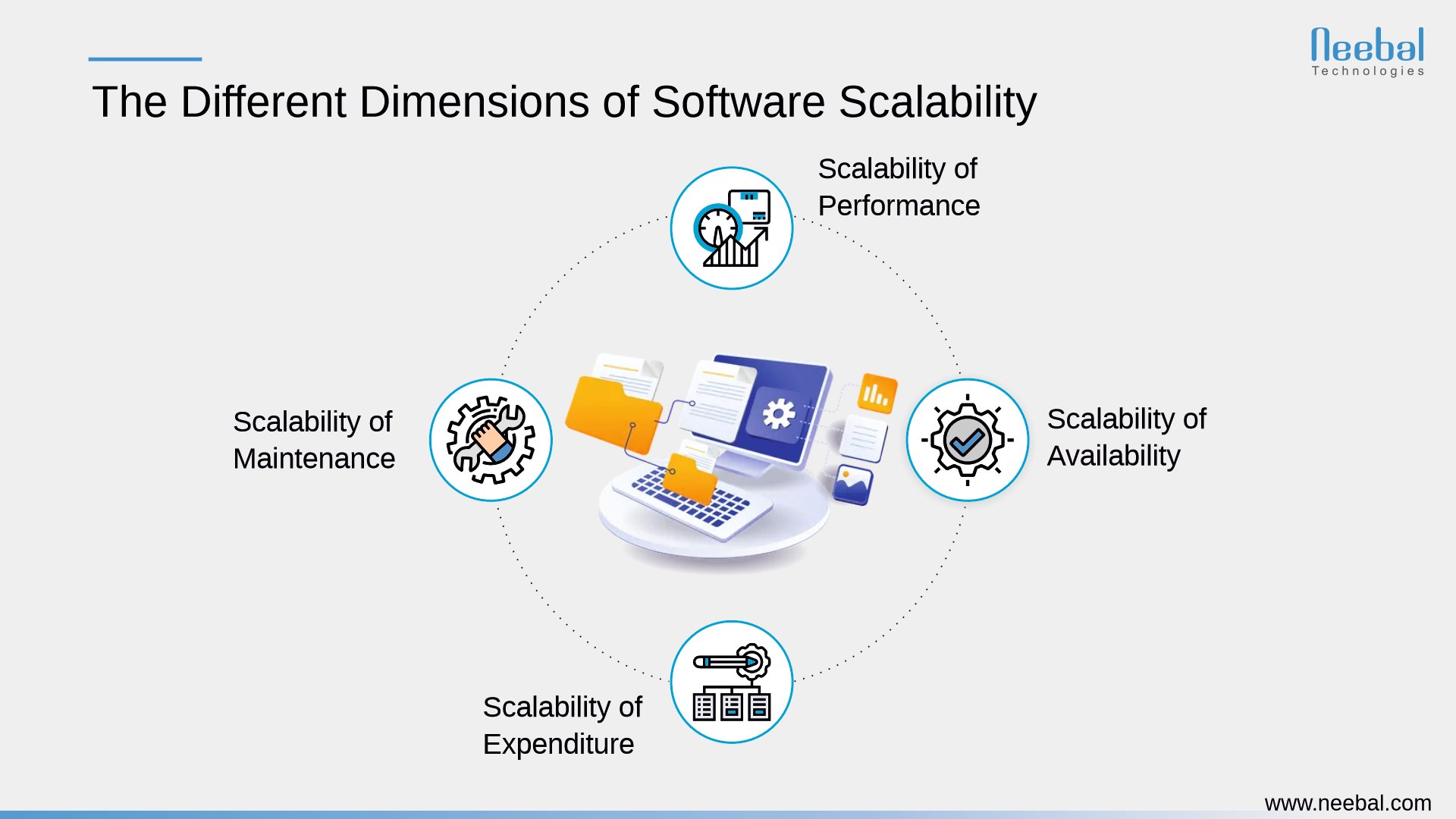Software scalability has become an important consideration for businesses aiming to deliver seamless user experiences while accommodating growth. Scaling a product is not merely about improving performance; it's about ensuring that a software system can handle increased demands, whether in terms of user traffic or data volume. In this blog, we will delve into the concept of software scalability, its importance, the various types of scaling, dimensions to consider, and key principles to follow when scaling your software product.
Understanding Software Scalability
Software scalability is often misconstrued as being synonymous with performance. However, the two are distinct concepts. Performance measures how quickly a software system responds to requests, while scalability focuses on the system's ability to handle a growing number of requests simultaneously. In essence, scalability addresses the question: Can the software system grow and adapt to increasing demands without compromising its reliability and performance
The Importance of Software Scalability
Many businesses initially prioritize delivering core functionalities and optimizing performance when developing software products. Scalability often takes a back seat until growth becomes a primary objective. As user numbers expand and data volume increases, a lack of scalability can lead to bottlenecks that hinder further growth. Recognizing the importance of scalability is crucial for sustaining and expanding your digital presence.
The Various Types of Software Scaling
Two primary types of software scaling exist, each with its own approach:
- Vertical Scaling: This involves enhancing the capabilities of an existing server by adding more resources, such as RAM or CPU. However, vertical scaling has limitations, as there's only so much you can add to a single server before hitting a ceiling.
- Horizontal Scaling: In contrast, horizontal scaling distributes workloads across multiple servers. This approach is essential when you anticipate unpredictable or substantial future workloads. Implementing horizontal scaling requires the appropriate computing infrastructure to manage additional physical machines effectively.
Choosing between vertical and horizontal scaling depends on your knowledge of future workload demands and your ability to invest in the necessary resources.
The Different Dimensions of Software Scalability

To design a scalable software system effectively, you must consider various dimensions:
- Scalability of Performance: High performance is essential to support more users. Increasing capacity can boost performance, but it doesn't scale linearly, meaning there are limits to how much you can improve performance solely by adding resources.
- Scalability of Availability: Balancing consistency, availability, and partition tolerance is critical in scalable system design. Strong consistency ensures users see the most recent updates immediately, but it can impact availability and partition tolerance. Eventual consistency, though, allows updates with minor time lags and might be a more practical choice.
- Scalability of Maintenance: Regular maintenance is a necessity for both software and IT infrastructure. Consider the implications of maintenance when designing scalable systems to ensure sustainability.
- Scalability of Expenditure: Building everything from scratch offers customization options but increases development and maintenance costs. Using market-leading components may limit customization but can significantly reduce costs and make it easier to find support.
How to Scale Your Software Product
Now, let's explore some key principles for scaling your software product effectively:
- Avoid a "Single Point of Failure" (SPOF): A single point of failure in a system is a component whose failure can render the entire system unavailable. To scale effectively, mitigate SPOFs by introducing redundancy, whether through hardware, software, or a combination of both. While redundancy increases initial costs, it pays off in improved availability and performance.
- Scale Horizontal: Embrace horizontal scaling (scaling out) instead of vertical scaling (scaling up) to avoid limitations on growth. Horizontal scaling offers benefits like increased system availability, reduced concerns about hardware capacity, and flexibility. Managed cloud services have made horizontal scaling more accessible and cost-effective.
- Use the Right Architecture Pattern: The choice of architecture pattern significantly influences scalability. Your software's nature will guide your choice, but popular patterns include microservices, serverless, and containerization. Select an architecture that aligns with your scalability goals and business requirements.
The Evolution of Software Scalability
Software scalability has evolved significantly over the years, driven by advances in technology and changing user expectations. In the early days of computing, scalability was a lesser concern as software systems served a limited user base. However, as the internet proliferated and digital transformation became the norm, scalability became a critical factor for success. The transition from monolithic applications to distributed systems and the advent of cloud computing have reshaped how we approach scalability.
Challenges in Achieving Scalability
While scalability is a desirable goal, it comes with its fair share of challenges. Managing a growing number of users and data can strain resources, lead to performance bottlenecks, and introduce complexities in system design. Ensuring data consistency across distributed systems, handling traffic spikes gracefully, and optimizing resource allocation are just a few of the challenges that software architects and developers face when scaling applications.
The Role of DevOps in Scalability
DevOps practices play a pivotal role in achieving scalability. Collaboration between development and operations teams ensures that scalability considerations are integrated into the development process from the outset. Automation of deployment pipelines, infrastructure as code (IAC), and continuous integration/continuous deployment (CI/CD) pipelines enable rapid and efficient scaling in response to changing demands.
The Future of Scalability
As technology continues to advance, the future of scalability holds exciting possibilities. Trends like serverless computing, edge computing, and the use of artificial intelligence (AI) for predictive scaling are reshaping how we approach scalability challenges. Additionally, as sustainability becomes a global priority, eco-friendly data center designs and energy-efficient computing will influence scalability decisions.
Conclusion
Scaling a software product is not an option but a necessity. Understanding the distinction between performance and scalability is the first step. Recognizing the importance of scalability, choosing the right scaling approach (vertical or horizontal), considering various scalability dimensions, and following key principles will empower you to build a resilient and adaptable software system that can grow with your business. In a world where user expectations are constantly evolving, mastering software scalability is the key to maintaining reliability and delivering exceptional user experiences.

